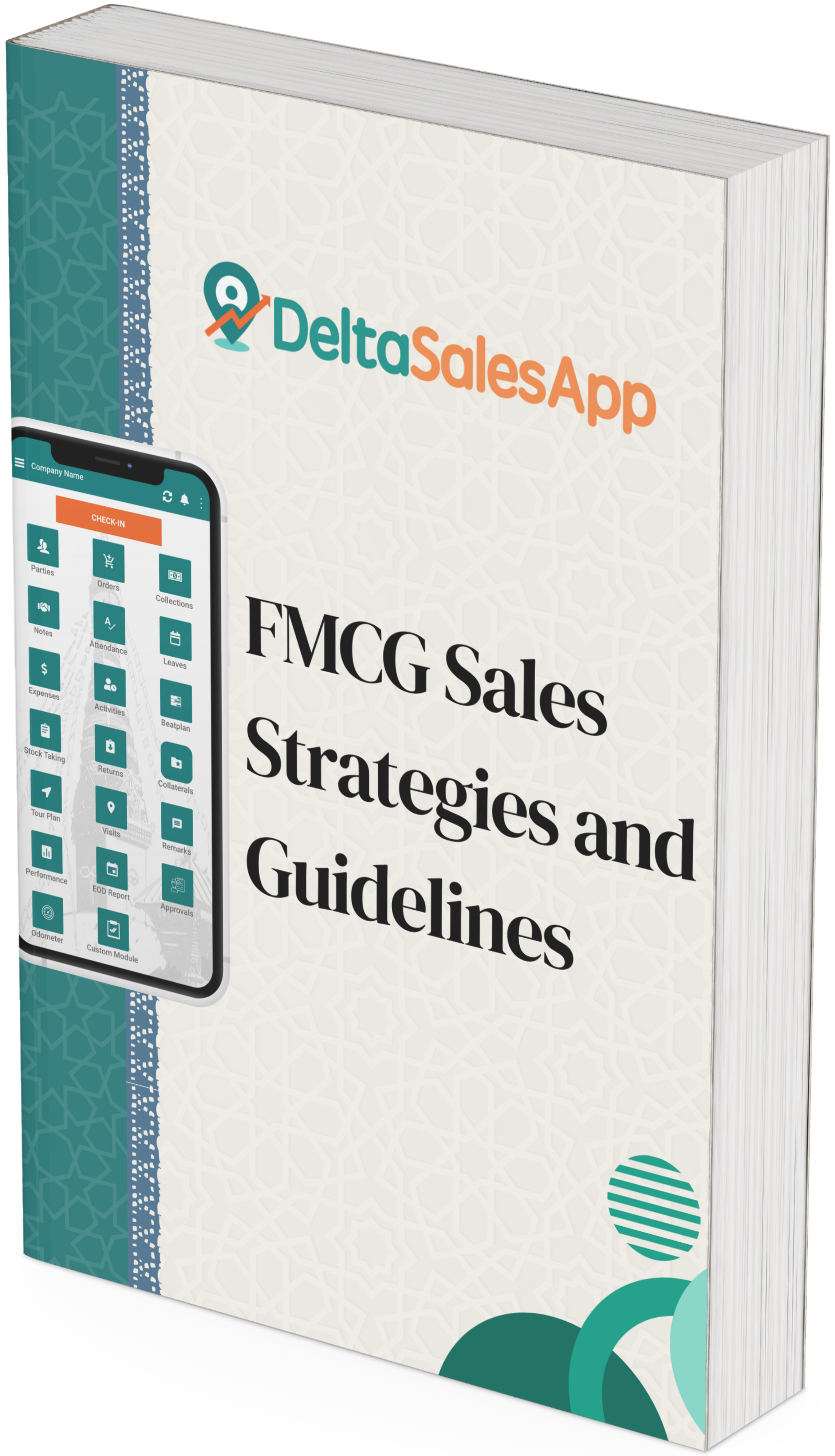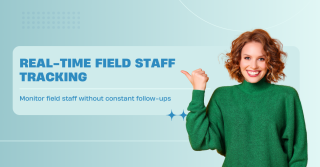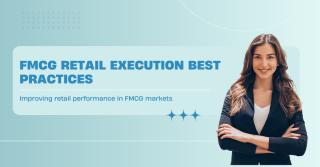Why Competitor Promotions Perform Better at the Shelf?

Did you know that a staggering 72% of promotional campaigns don’t deliver the expected returns? That means only about 28% of brands are successfully driving growth from their promotions — and chances are, your competitors are part of that elite group. They’re claiming more shelf space, securing stronger brand visibility, and converting more shoppers at the moment of truth: in the store.
So what are they doing differently?
It comes down to how they manage execution — not just at launch, but every single day the campaign runs. The top-performing brands are using Field Sales Force Automation to gain real-time visibility into their promotions and adjust instantly to what’s happening in the field. This gives them a significant edge over brands still using manual processes and static strategies.
Let’s walk through a side-by-side comparison of how two brands manage a 30-day in-store promotion — one powered by Field Sales Force Automation, and one without.
Day 1: Launching the Promotion
Brand A – Proactive (with Field Sales Force Automation)
A field rep arrives at the store and finds promotional signage sitting in the back room. Without delay, they set up the display, confirm stock, and mark the location as high-priority in their Field Sales Force Automation system. The territory manager receives an alert in real-time and reroutes other reps to ensure similar issues are quickly addressed.
Brand B – Reactive (Manual Tracking)
Another rep at a different store sees the same signage issue. They fix the display manually and send an email report. But it gets buried in dozens of updates. No follow-up action is taken, and the opportunity to correct the issue elsewhere is missed.
Day 5: Early Opportunity to Optimize
Brand A
Using data from their Field Sales Force Automation dashboard, Brand A sees that this store is experiencing high product turnover. The rep returns to restock and places a reorder using the system. Sales are captured in full.
Brand B
The rep never returns. No one notices the spike in product movement. The display runs out. The opportunity is lost before anyone knows it existed.
Day 10: Compliance Check
Brand A
Field data from Field Sales Force Automation shows consistent issues with signage compliance across multiple stores in a retail chain. Management launches a targeted audit and deploys corrective materials within 24 hours.
Brand B
The rep revisits the problem store only to find the competitor’s product now occupies the empty display. They place a late reorder, but recovery takes several days. No alerts were raised, and central teams remain unaware.
Day 15: Mid-Campaign Reprioritization
Brand A
With real-time store performance insights from Field Sales Force Automation, Brand A shifts resources to stores that are underperforming. Reps fix display issues, re-engage retail staff, and drive a measurable lift by adapting fast.
Brand B
Two weeks’ worth of rep emails are finally reviewed. Issues from Day 1 are discovered — but by now, it’s too late. With only one store visit left, very little can be done to recover momentum.
Day 30: Wrapping Up the Promotion
Brand A
With detailed analytics from their Field Sales Force Automation platform, Brand A identifies what worked — down to the rep, store, and tactic. They present a success report to retail partners, building credibility and planning improvements for the next round.
Brand B
Post-promotion analysis shows mixed results. Some stores performed well, others underdelivered. The team tries to piece together what went wrong using scattered emails and spreadsheets. Valuable insights come too late to act on.
What Really Drives Promotional Success?
The truth is, promotions aren’t just won with good planning. They’re won with real-time execution — powered by Field Sales Force Automation.
When brands can see what’s happening on the ground and act immediately, they correct issues faster, prevent lost sales, and guide field reps with precision. In contrast, reactive strategies miss the moment. By the time problems are discovered, the campaign is already over.
That’s the real difference between success and missed potential.
Why Field Execution Impacts Sales Performance?
Brands leveraging Field Sales Force Automation are using technology-driven tools to:
Track store-level execution in real time
Identify stockouts, display errors, and compliance gaps instantly
Adjust rep schedules dynamically based on in-store needs
Enable faster replenishment and better retail engagement
Share actionable insights with managers and distribution partners
This kind of agility helps ensure promotions don’t just launch — they perform consistently, from Day 1 to Day 30.
Final Thoughts: Win the Shelf War with Field Sales Force Automation
In today’s ultra-competitive retail environment, you don’t get second chances at the shelf. Your product either shows up correctly and on time — or it doesn’t. Your brand either wins the shopper’s attention — or a competitor does.
That’s why Field Sales Force Automation is no longer optional. It’s the difference between being reactive and being in control.
Brands that adopt Field Sales Force Automation:
Gain real-time visibility into what’s working and what’s not
Empower field reps to take action in the moment, not after the fact
Save hours of manual tracking and reporting
Optimize every campaign while it’s still in flight
Capture more sales, every single day of the promotion
If you're still managing promotions with spreadsheets, email threads, or outdated CRM tools, you're already a step behind. Meanwhile, your competitors are using automation tools to maximize every inch of shelf space and convert every opportunity they get.
It’s time to make the shift.
automation tool doesn’t just help you execute better — it gives you the insight, speed, and confidence to lead the market.
Stop reacting. Start optimizing. And start winning — where it matters most: at the shelf.
Frequently Asked Questions (FAQs)
1. Why do some in-store promotions perform better than others?
Promotions succeed when they’re not just well-planned, but well-executed. Top-performing brands go beyond launch-day efforts — they continuously monitor and optimize campaigns in real time. This means fixing display issues, restocking fast, and adapting based on what’s actually happening in each store.
2. What is in-flight promotion optimization?
In-flight promotion optimization refers to managing and adjusting promotional campaigns while they’re still active. It allows brands to respond to real-time issues like missing signage, low stock, or display non-compliance — rather than waiting until after the campaign ends to analyze performance.
3. How does Field Sales Force Automation support better promotion execution?
Field Sales Force Automation (SFA) gives sales reps and managers real-time tools to track store visits, compliance, and stock levels. It ensures that reps can flag issues instantly, take corrective actions, and update managers with structured data — leading to higher promotional impact.
4. What happens when brands rely only on manual reporting methods?
When brands depend on spreadsheets or daily emails for field reporting, key issues often go unnoticed. Delayed responses to stockouts or display errors result in missed sales opportunities. Without real-time insights, promotional adjustments happen too late to be effective.
5. How does Distributor Management Software (DMS) enhance promotion performance?
DMS helps manage product flow from warehouses to retail stores. During promotions, it ensures quick replenishment, transparent inventory tracking, and distributor accountability. When integrated with SFA, it creates a seamless execution pipeline from planning to shelf.
6. What are the most common reasons in-store promotions fail?
Promotions often underperform due to:
Poor display setup or signage
Delayed stock replenishment
Non-compliant or missed execution in stores
Lack of field visibility and slow issue resolution
Inability to reprioritize stores mid-campaign
These can all be avoided with real-time monitoring tools and a responsive field strategy.









